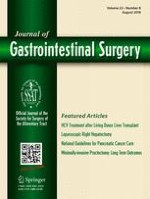20.04.2018 | Multimedia Article
Fundoplication with 180-Degree Wrap During Esophagogastrostomy After Robotic Proximal Gastrectomy for Early Gastric Cancer
Erschienen in: Journal of Gastrointestinal Surgery | Ausgabe 8/2018
Einloggen, um Zugang zu erhalten










